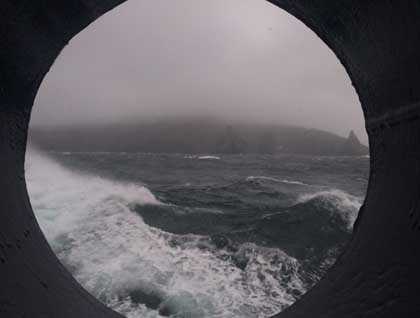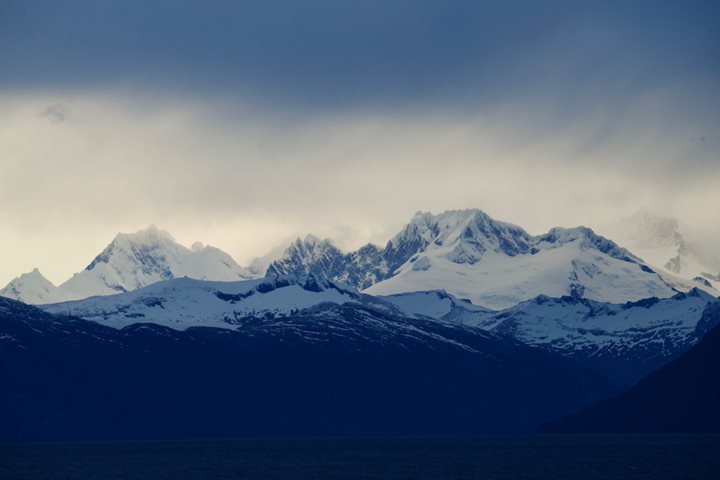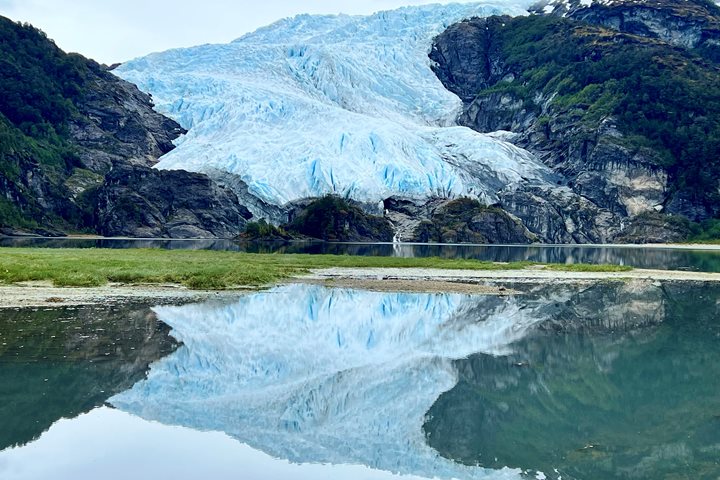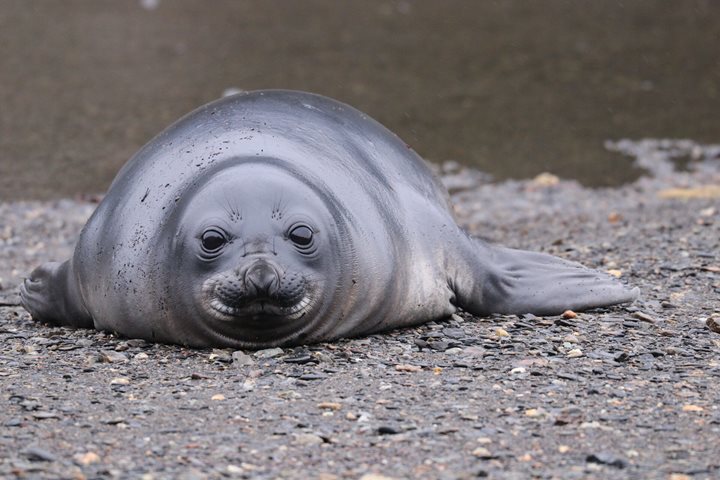Earlier in the voyage, on our full day in Torres del Paine, we had made a comfort stop at café-cum-store which offered a good selection of local interest books for sale. My eye was caught by a thick tome entitled, in Spanish, Los Naufragios de Cabo de Hornos (Shipwrecks of Cape Horn). It was volume two, the first volume having sold out. It was not entirely clear either whether the second volume was the final volume in the series, for to call Cape Horn a graveyard of sailing ships would be an understatement. Charts showing the wreck sites are so densely marked that it is difficult to read the names of individual ships. The coast is rocky and full of skerries; here two oceans meet and in these latitudes the wind roars.
In the early hours of the morning we slipped out of the protection of the Beagle Channel and made our way south to this infamous location off the southern tip of South America. Circumnavigating the island, named by a Dutch captain after his hometown in The Netherlands, we had good views of the Albatross Memorial (honoring the maritime dead) and the lighthouse. By mid-morning a window of opportunity for a landing had presented itself and we were able to land some 130 guests in an exemplary Zodiac operation of the kind for which National Geographic Explorer is celebrated. The lighthouse keeper and his family hosted us graciously and we braved the strong winds atop the island to visit the Albatross Memorial and that to Captain Robert Fitzroy who had preceded us with a landing here in 1830. It was moment to savor with our purser kept busy ensuring our passports received a commemorative stamp.
In the afternoon we returned to the Beagle Channel for customs formalities, checking out of Chile at Puerto Williams and entering Argentina at Ushuaia. The latter town has grown out of a mid-nineteenth century Anglican mission founded by Thomas Bridges who labored here amongst the Yahgan people, as he called them and produced a 30,000 word Yahgan-English Dictionary, which is an ethnological marvel. The story of its survival is an extraordinary one. It was taken to Brussels in Belgium by a genial polar impostor Frederick Cook who planned to publish it in his own name, refusing to hand it back to the Bridges family after the death of Thomas Bridges. With the city engulfed in World War One hostilities, the manuscript was lost surfacing in only in the 1930s in time for it to be donated to the British Library, which was soon hit by German bombs in the opening years of the Second World War. It was finally re-discovered in the 1950s. Ironically, although the dictionary has survived speakers of the Yahgan language have not. The Yahgan population was decimated by European diseases like measles and influenza brought to Tierra del Fuego by the well-intentioned missionaries.









